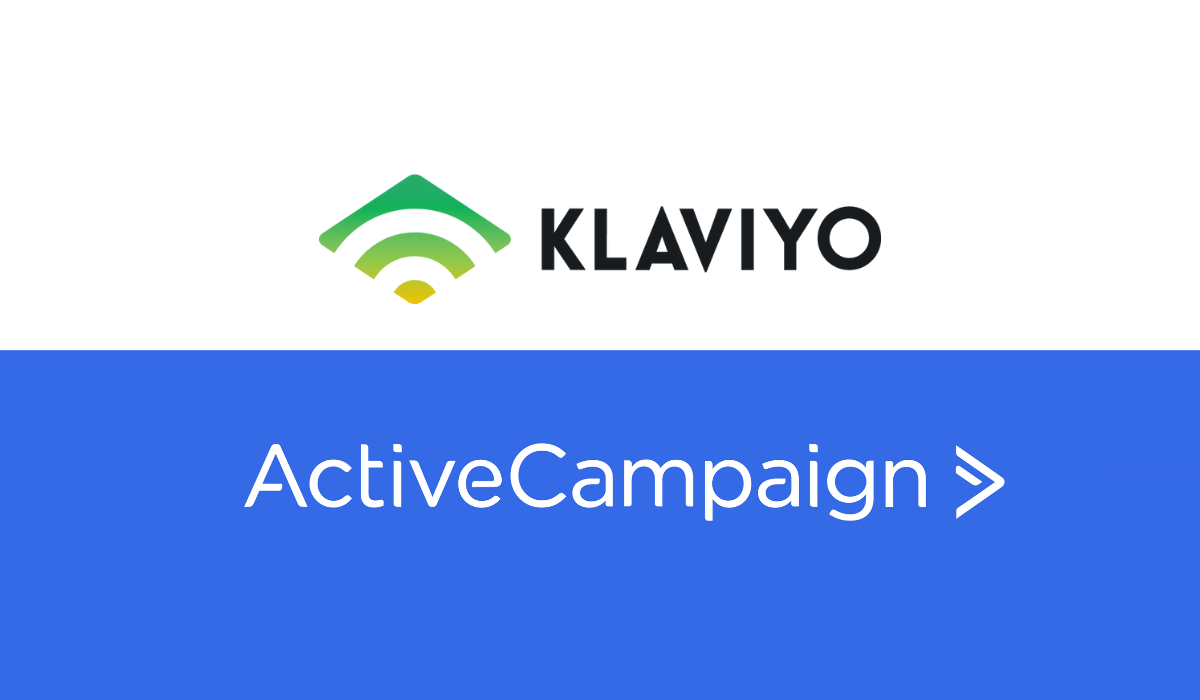Ecommerce email marketing comparison: Klaviyo vs Mailchimp
Email marketing tools are essential components of any ecommerce marketing campaign and strategy. With the right email marketing platform, you can improve the customer acquisition and retention, lead generation and conversion optimisation of your ecommerce store.
This article looks at two of the most popular email marketing tools on the market today: Mailchimp and Klaviyo. We’ll explore the differences between these platforms and discuss which is better for ecoxqmmerce businesses.
Click on one of the links below to jump to that section:
- Klaviyo vs Mailchimp: Overview
- Purpose and functionality
- Ease of use and design
- Segmentation and automation
- Frequently asked questions
Klaviyo vs Mailchimp: Overview
|
|
Klaviyo |
Mailchimp |
|
Pricing |
Then $10 for every additional 500 contacts. Each of these tiers offers the same basic features. What changes as you go up the tiers is the number of contacts, the number of emails you can send, and the amount of support you get from Klaviyo. |
|
|
Integrations |
Klaviyo's open API also enables users to create their own integrations. |
Mailchimp also offers a Marketing API, Transactional Email API and a modular ecommerce-focused API to enable custom integrations. |
|
Automation |
|
|
|
Usability |
Steep learning curve but offers more advanced features. |
Simple to use but less powerful than Klaviyo. |
|
Audience segmentation |
|
|
|
Analytics and reporting |
|
|
|
A/B testing |
Supports advanced A/B testing, including predictive analyses. |
Supports A/B testing but doesn't offer predictive analysis. |
|
Customer support |
|
|
Purpose and functionality
Klaviyo is a more powerful tool than Mailchimp and is designed specifically with ecommerce stores in mind. The automation features it offers are augmented by its deep integration potential. By integrating Klaviyo with other platforms and data sources, ecommerce businesses have a powerful tool for spurring growth and driving up conversions. Klaviyo also provides greater scope for personalised communications with your audience via social media and other channels.
Mailchimp, on the other hand, is a more general-purpose email marketing tool. It lacks the depth of Klaviyo; it does one thing (sending emails) but does it well.
Ease of use and design
Klaviyo is a newer platform than Mailchimp, and it feels more modern. Klaviyo also offers a much more robust feature set than Mailchimp, although Mailchimp has expanded its offering significantly in recent years. The drag and drop email builder is easy to use and makes creating eye-catching emails relatively simple. Klaviyo also offers an SMS marketing tool as well as email marketing.
While Klaviyo is a more sophisticated tool, it comes with a steeper learning curve. However, its superb feature set and scope for integration make it worth the investment for any ecommerce business.
Mailchimp utilises a clean, minimalist interface that makes navigation easy and enables the user to get up to speed as fast as possible. Users can choose between a drag and drop interface or an HTML editor, which makes Mailchimp very flexible. Although the platform's focus is email marketing, it has expanded its feature set over the years and offers numerous marketing features.
Segmentation and automation
Klaviyo's audience segmentation capability is one of the best available. From the moment you first sign in to your account, you will have the option to segment your imported contacts according to data pulled in from any source you integrate with Klaviyo.
Klaviyo's automated workflows are simply called 'Flows.' The Flows tab within Klaviyo contains numerous pre-built templates to enable you to create your own marketing automation routines quickly and easily. One advantage of using Klaviyo is that you can set up Flows based on data from your email list, ecommerce platform and other sales tools. Klaviyo's integration capabilities give you plenty of scope for personalising workflows according to real-time customer activity.
The basic Mailchimp account enables you to segment your audience based on a range of specific data points. However, it's the advanced segmentation features in the premium plans where Mailchimp shines.
Mailchimp enables users to set up automated workflows based on specific marketing goals. With the free tier, you only get a single-trigger notification or welcome email. However, higher-tier plans enable increasingly advanced automation capabilities, such as tracking users in real-time and gathering subscriber data. By integrating Mailchimp with your website, you can set up automation workflows based on how your users interact with your content.
Mailchimp includes some pre-built automation templates to get you started, but you can construct your own easily with the 'Workflow Editor.'
Frequently asked questions
What is ‘email marketing’?
Email marketing refers to any digital marketing techniques delivered via email. This includes newsletters, personalised ads, abandoned cart emails, and more.
What is the best email marketing tool for Shopify stores?
Klaviyo is the only choice here; Mailchimp doesn't support Shopify integration. If you're a Shopify merchant, check out our guide to integrating Klaviyo with your store.
Which email marketing tool is best for ecommerce businesses?
The best tool for you will depend on your individual circumstances and priorities. Mailchimp is a more affordable solution and is very user-friendly, but it doesn't offer the same depth or scope for integrations as Klaviyo and isn’t designed specifically for the needs of ecommerce businesses. However, if you're looking for a more feature-rich email marketing software and you want a tool that integrates with other platforms you use, Klaviyo is the way to go.




